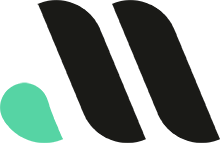




Request for Proposal (RFP) for Website Design: How to Get the Best Website for Your Business
If you’re looking to revamp your business’s online presence or start from scratch with a new website, it’s essential to hire the right web design agency. One of the most effective ways to find the perfect match for your needs is by creating a Request for Proposal (RFP) for website design.
An RFP allows you to outline your project requirements, goals, budget, and expectations, so potential agencies can offer tailored solutions. In this post, we’ll guide you through what an RFP is, why it’s crucial for website design projects, and how to create one that attracts high-quality proposals from top web design agencies.
What is an RFP for Website Design?
A Request for Proposal (RFP) for website design is a formal document that businesses use to solicit proposals from web design agencies. It details the scope of the project, your website objectives, specific requirements, and the criteria you’ll use to select an agency.
The RFP process helps both the client and the web design agency understand project expectations and ensures that all potential vendors are on the same page regarding deliverables, timelines, and budget. The goal is to find a web design partner that best aligns with your business goals and has the expertise to deliver a high-performing website.
Why Do You Need an RFP for Website Design?
Creating an RFP for your website design project offers several benefits, including:
- Clear Communication: An RFP ensures that you clearly communicate your needs, helping agencies understand exactly what you’re looking for.
- Get Accurate Proposals: By providing a detailed scope of work, agencies can tailor their proposals to your project, giving you a more accurate idea of costs and deliverables.
- Better Decision-Making: With multiple proposals in hand, you can compare agencies on an even playing field, helping you choose the one that’s the best fit for your business.
- Set Expectations: An RFP sets expectations regarding timelines, budget, and project scope, reducing the chances of misunderstandings later on.
- Attract the Right Talent: A well-written RFP attracts experienced web design agencies that can meet your specific needs, allowing you to choose from top-tier candidates.
Key Elements of a Website Design RFP
To create an effective Request for Proposal for website design, it’s essential to include the right information. Below are the key elements that should be part of your RFP:
1. Introduction and Background
Start with a brief introduction about your business, including who you are, what you do, and your core values. Providing context helps agencies understand your brand, industry, and the purpose of your website.
Example: “We are [Company Name], a [type of business], looking to redesign our current website to improve user experience and increase conversions. Our target audience includes [target market], and we aim to provide [specific services or products].”
2. Project Overview
Provide a summary of your project’s goals, including why you need a new website or a redesign. Are you looking to increase leads, improve user experience, or expand your online presence? Be clear about your objectives.
Example: “Our goal is to build a responsive, mobile-friendly website that enhances user experience, improves SEO performance, and integrates with our existing CRM. The new website will serve as a primary lead generation tool and showcase our services.”
3. Scope of Work
Detail the scope of work, including the specific features and functionalities you need. This section should outline your expectations for the design, content management system (CMS), and any integrations with third-party tools.
Include:
- Pages and sections (e.g., homepage, service pages, blog, contact form)
- Features (e.g., eCommerce functionality, booking system, user accounts)
- CMS preferences (e.g., WordPress, Shopify, or custom-built)
- Any specific plugins or integrations required (e.g., CRM, email marketing tools, payment gateways)
4. Design and Branding Requirements
Provide any design and branding guidelines that the agency should follow. If you have an existing brand identity, share your brand colors, logos, fonts, and imagery. If you’re open to a complete rebranding, mention that as well.
Questions to consider:
- Do you have a specific color scheme or typography preferences?
- Will you be providing assets such as images, videos, or content?
- Are there specific design features you admire from competitor websites?
5. Timeline
Specify your desired project timeline, including major milestones like the project start date, initial design review, beta testing, and launch date. It’s important to be realistic about how long the process might take based on the complexity of the project.
Example: “We aim to have the new website live by [launch date]. Please provide a project timeline that includes design, development, content migration, testing, and launch.”
6. Budget
Providing a budget range is critical for ensuring that you receive proposals from agencies that align with your financial resources. Be clear about your budget expectations and whether it includes design, development, maintenance, and other ongoing services.
Example: “Our budget for this project is between $XX,000 and $XX,000. Please include a detailed breakdown of costs for each phase of the project.”
7. Selection Criteria
Outline the criteria you’ll use to evaluate and select a web design agency. This helps agencies understand what you prioritize—whether it’s experience, creativity, technical skills, or cost.
Selection criteria might include:
- Portfolio of relevant work
- Experience with your industry or project type
- Proposed approach to the project
- Timeline and availability
- Cost and value for money
8. Submission Guidelines
Provide clear instructions on how agencies should submit their proposals, including the format (PDF, Word doc), any required documents (e.g., portfolio, references), and the deadline for submissions.
Example: “Please submit your proposal in PDF format by [submission deadline]. Proposals should include a portfolio of past work, detailed pricing, and an overview of your approach to this project.”
9. Contact Information
Make sure agencies know who to contact for questions and where to send their completed proposals. Include the name, email, and phone number of the main point of contact within your organization.
Tips for Creating an Effective Website Design RFP
- Be Detailed but Concise: Provide enough detail for agencies to understand your needs without overwhelming them with too much information.
- Encourage Creativity: While it’s essential to be specific about your requirements, allow room for agencies to propose creative solutions that may go beyond your initial ideas.
- Request a Timeline and Approach: Ask agencies to include a timeline and outline their approach to project management, communication, and post-launch support.
- Set Clear Expectations: Be transparent about your budget, timeline, and expectations to avoid misunderstandings and ensure you receive proposals that meet your needs.
- Review and Compare Proposals: Once you receive proposals, compare them based on the selection criteria you’ve set. Look for agencies that demonstrate a clear understanding of your project, have relevant experience, and offer a competitive price.
Conclusion
Creating a Request for Proposal (RFP) for website design is an essential step in finding the right web design agency for your business. By providing a clear and detailed RFP, you can attract proposals that align with your vision and goals, ensuring a smooth design process and a website that meets your business’s needs.
At Masthead Technology, we specialize in delivering custom website design solutions tailored to your business. If you’re ready to take the next step in your website design journey, contact us today to learn how we can help bring your vision to life.
FAQs
1. How long does the RFP process typically take?
The RFP process can take several weeks, depending on how many proposals you receive and the complexity of your project. Allow enough time for agencies to ask questions and submit detailed proposals.
2. Should I include my budget in the RFP?
Yes, including a budget helps agencies tailor their proposals to your financial constraints and prevents you from receiving bids outside your price range.
3. How many agencies should I send my RFP to?
It’s best to send your RFP to 3-5 qualified agencies. This allows you to compare different approaches and prices without becoming overwhelmed by too many options.
4. What’s the most important part of an RFP for website design?
The most critical part of an RFP is the project scope. Clearly outlining your goals, required features, and design preferences will help agencies understand what you’re looking for and provide accurate proposals.
5. How do I evaluate web design proposals?
Evaluate proposals based on the agency’s experience, portfolio, pricing, timeline, and approach. Consider how well their proposed solution meets your project goals and fits your budget.

